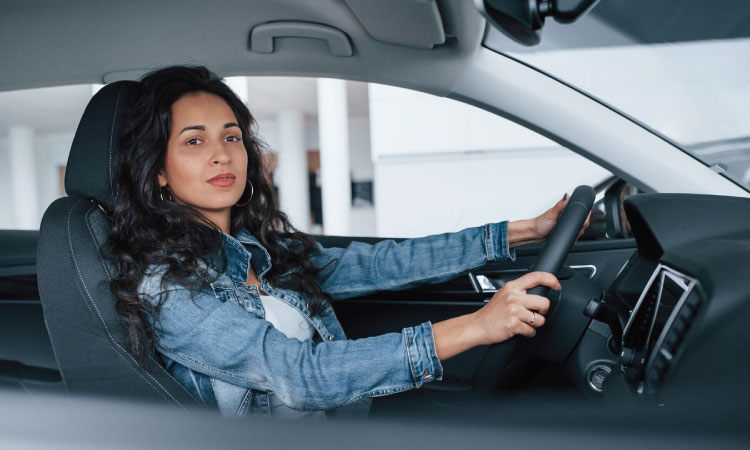Welcoming a new life into the world is an incredible experience, which sometimes involves a cesarean section (C-section) for certain mothers. When it comes to getting back to your normal routine after the procedure, there are some important things to keep in mind. Safety is a top priority for both you and your little one, so it’s crucial to take certain precautions, like when it comes to driving after a C-section.
Returning to driving after a C-section requires careful consideration of timing, paying attention to your body’s signals, and adhering to safety protocols to ensure a safe driving experience. Let’s explore the important factors of driving after a C-section, including when it’s best to start driving again, helpful techniques, and safety measures to keep in mind. This knowledge will help ensure a safe and comfortable recovery journey.
Why Can’t I Drive After My C-Section?
“Why no driving after C-section” is a common question asked by new mothers who enjoy driving. Refraining from driving after a C-section is mainly focused on giving your body the necessary time to heal effectively, reducing any discomfort, and prioritizing your safety.
Driving after a C-section is generally not recommended due to several factors:
1. A longer recovery time for the body
After a cesarean section (C-section), it is important to give your body the necessary time to heal. Major abdominal surgery is required for the procedure, which may result in significant pain and discomfort. It is not advisable to sit in a driving seat during the first few weeks after a c-section.
2. Driving requires movements that may stress the incision
Bending, twisting, or sudden jolts can cause strain on the incision and slow down the healing process after the c-section. These movements are one of the few restrictions after a c-section and driving necessitates these movements.
Driving before the healing process is complete after a c-section could potentially cause stress on the incision site, which may result in complications or discomfort.
Related Reading: How To Get Up From Bed After C-Section
3. Emergency stopping is difficult after a C-section.
Driving after a C-section can be quite tricky, especially when it comes to making sudden stops. Being able to perform an emergency stop is crucial for ensuring safe driving. The effectiveness of performing an emergency stop depends on how quickly one can react and move their lower limbs.
The abdominal muscles and surrounding tissues may be weakened or tender after surgery, affecting your ability to move quickly and effectively.
Given that a cesarean section is a significant abdominal surgery, the nerves in the abdomen and pelvic region can be affected during the procedure. This can result in feelings of pain, tingling, or numbness that extend down the legs, buttocks, or lower back1.
Therefore, after a c-section, there could be a delay in responding and limited pain-free movement in the lower limbs, potentially affecting the efficiency of emergency stops2.
4. Pain medication can hinder safe driving
Pain medication administered during and after the surgery can sometimes cause side effects, including muscle weakness or sensations of tingling or discomfort in the legs3.
It is important to consider the impact of pain medication on your alertness and reaction time, as these factors play a critical role in ensuring safe driving.
5. Probability of complications
Sudden and forceful actions, such as abruptly applying the brakes, can put excessive pressure on the surgical incision, which can lead to potential complications like reopening the wound or internal bleeding.
It is important to refrain from engaging in activities that may cause excessive strain on your body in the initial phases of recovery.
When Can I Resume Driving After A C-Section

Wondering when you will be able to get behind the wheel after a C-section? There is no set guideline for when it is appropriate to resume driving after a C-section. There is currently no research-backed data regarding the specific timeframe for resuming driving after a C-section.
However, it is generally recommended to wait until you have completed the prescribed pain medication and feel sufficiently at ease and self-assured behind the wheel. Also, there are some restrictions after the C-section that need to be addressed.
It is crucial to concentrate on getting plenty of rest, caring for your wound, and gradually increasing physical activity during the early stages of C-section recovery. Driving requires the engagement of abdominal muscles and may put a strain on the incision site.
Therefore, it is crucial to make sure you have fully recovered and feel at ease before resuming driving.
You can confidently resume driving after a C-section once you feel prepared and no longer feel any discomfort. According to this source, it could be approximately six weeks after the C-section.
For some new mothers, driving after 4 weeks may feel comfortable.However, it is typically wise to exercise caution and follow your doctor’s guidance.
Based on a thorough evaluation of your postnatal health, the healing progress, and any additional medical concerns, they will guide the appropriate timing for you to resume driving.
Precautions To Take When Driving After A Cesarean
Driving after a cesarean section (C-section) necessitates extra caution and thoughtfulness due to its potential impact on the body’s healing process. Being a new mother behind the wheel is an exciting adventure, but like navigating a twisty road, it demands your undivided attention and a few extra safety measures.
Here are some precautions to ensure a safe driving experience post-C-section, presented interestingly and memorably:
1. You must get your doctor’s OK before driving after a C-section
Waiting for your doctor’s permission before resuming driving after a C-section is crucial for several reasons. Waiting allows time for your muscles to strengthen and your incision to heal properly, minimizing discomfort while driving.
In addition, it is dangerous to drive before getting medical clearance following a C-section, since doing so might result in legal complications in the event of an accident. Insurance coverage may be affected if you’re driving against medical advice4.
Related Reading: 9 Signs Of A C-Section Infection To Watch Out For
2. Practice gentle driving
Avoid driving in heavy traffic or congested areas initially. Start with shorter trips in low-stress environments until you regain your confidence and strength. Placing a pillow or cushion over your abdomen while driving will provide support for your incision site and reduce discomfort from bumps or sudden movements.
3. Avoid rough roads
Avoid bumpy rides and difficult roads, just as you may choose a well-paved, smooth roadway over one that is full of potholes. Driving over rough terrain may put strain on your abdominal muscles and incision, which could result in complications like slower healing, more swelling, or, in severe cases, reopening of the incision.
Moreover, trying to concentrate and control on rough roads after a C-section might be difficult.
4. Make sure to adjust the seatbelt to ensure maximum comfort
Wearing a seatbelt while driving is crucial for your safety. Properly wearing your seatbelt after a c-section is crucial for minimizing any discomfort. Ensure that the area where the incision was made is not compressed when wearing your seatbelt.
Incorrect positioning of the seatbelt can lead to discomfort and potentially disrupt the healing process. Make sure the lap belt is positioned low on your hips, below your abdomen, and that the shoulder belt crosses your chest without applying pressure to your incision area.
5. Make sure to take regular breaks
If you experience fatigue or discomfort while driving, it is advisable to make use of rest stops without delay, especially during long car journeys after a c-section. Avoid prolonged periods of sitting without breaks to stretch and move around.
Related Reading: Are You A New Mother? These Tips Will Help You!
Your body is still healing, so it’s essential to listen to its signals and take breaks as needed. If you experience any unusual pain, discomfort, or symptoms while driving, it’s essential to stop and seek medical advice promptly.
Conclusion
Remember that recovering from a C-section takes time, and it’s important to be patient with yourself. Don’t push yourself too hard, and give yourself the time you need to heal properly before returning to your normal activities, including driving.
If you’re feeling unsure or uncomfortable about driving, ask someone else to drive you or use alternative transportation methods until you feel more confident.


